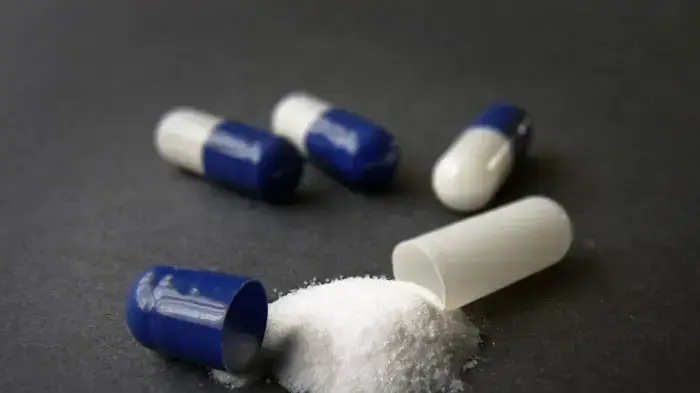Joanne Cameron, a 75-year-old woman living in Scotland, is a happy mutant. A change in the expression of the FAAH gene, which produces an enzyme that processes endocannabinoids and causes them to be absorbed into the body, keeps it in an unusually constant state of well-being. In Cameron's body, levels of anandamide, a substance with marijuana-like effects, are higher than normal because it remains intact longer and his levels of anxiety, stress or pain are much lower. "This makes me ridiculously happy and it's annoying to be with me. People like to be sad," she joked a few years ago interviewed by EL PAÍS. His case came in 2013 to pain geneticists at University College London (UCL), when his doctors realised he felt pain-free after two serious interventions on his hip and hand. Since then, researchers have tried to understand what makes Cameron special to help the millions of people who live with chronic pain and anxiety and have only insufficient solutions or dangerously addictive drugs.
Recently, in a work led by Andrei Okorokov and James Cox, from UCL, and published in the journal Brain, researchers have detailed some of the particularities of the Scot. One in three people have mutated the FAAH gene and higher levels of anandamide, but not all enjoy protection from the tribulations of Cameron's life. She tells another rare mutation in a gene called FAAH-OUT, found in what was known as junk DNA, a region of the genome that for a long time was believed useless because, despite making up 98% of our genetic material, it does not produce proteins. In recent years, it has been discovered that these dark genes influence how those that do produce proteins are expressed. That interaction explains the case of Cameron, a retired school teacher.
Okorokov states that "the FAAH-OUT gene is a small corner of a vast continent that this study has begun to map." In addition to identifying the molecular basis of the absence of pain, this work has found the way in which the mutation of this dark gene improves mood or facilitates the healing of wounds. According to Okorokov, "these findings will have important implications for areas of research such as wound healing or depression." The researchers observed that, in addition to reducing the activity of the gene responsible for removing endocannabionides from the blood, there are 348 other attenuated genes, but also 797 intensified ones. Among them is WNT16, related to bone regeneration, or BDNF, which influences mood.
More informationIn search of a solution for the pains that were thought to have been invented
This work is a step to recover the potential of the endocannabinoid system as a target for treatments against pain in a world where around 20% of the population suffers chronically and in which the epidemic of addiction caused by the misuse of opioid medications is alarming. After two decades of testing drugs that inhibit the FAAH gene, none have been approved and in 2016, one of them produced a tragedy in a clinical trial developed in France by the Portuguese company Bial. The drug, intended to treat motor and anxiety problems in diseases such as Parkinson's, caused poisonings in the brains of the participants that ended the life of one of them and caused significant damage to four others. Further investigation concluded that the molecule had unexpected effects on enzymes other than those it was intended to block.
Cannabinoid-based drugs
Javier Fernández, director of the cannabinoid research group at the Complutense University of Madrid, believes that these results "open the possibility of intervening directly on this regulatory process." The researcher believes that, from a practical point of view, it is still science fiction, "because it is difficult to bring these types of agents to the sites where they are going to be useful and, in many cases, they are very ubiquitous enzymes or proteins, so such a tool can affect many things and have many side effects." However, he affirms that "it is a good guide for the future" and "recovers the value of pharmacological inhibitors, which were a little stopped by that failed trial." "For now, only Sativex is approved in Canada for cancer pain, almost as an exception, in compassionate use, and there is no other cannabinoid-based drug approved for pain."
Although Fernández acknowledges that the potency of cannabinoids to combat pain is lower than that of opioids, he recalls that "they are also much safer" and can enhance the effects on our internal opioid system. According to the researcher, one way to take advantage of these synergistic effects would be to combine a low dose, which alone would have no effect, of an opioid, with another reduced dose of a cannabinoid. "With this combination, the same effects would be obtained as the opioids used now, but without the problems of the epidemic [due to the use of these drugs] that has been seen in the United States and is now beginning to be seen in Europe," he explains.
Andrés Ozaita, professor of pharmacology at Pompeu Fabra University, believes that the knowledge gained from the study of people like Joanne Cameron can lead to treatments that change the way we understand pain treatment. "Knowing these mechanisms of gene expression, new approaches can be proposed, such as gene therapy for people with chronic pain, making the neurons of the dorsal root ganglia not as effective and reducing the sensation of pain," Ozaita exemplifies. This type of therapy would consist of the transfer of genetic material to modify the expression of some genes of patients and make them more similar to that of people like Cameron. "In the medium term, I would see it as feasible, especially to treat the most extreme cases, in which other pharmacological approaches are not being effective," he says.
Although Cameron is a person with less anxiety and pain than average, she herself acknowledged in an interview with EL PAÍS in 2019 that her mutations not only offer advantages. "I burn often in the kitchen and don't find out until it smells like burnt meat. I have a lot of scars on my body," he said then. "It's not a good thing. This has its advantages and disadvantages. Pain alerts you that something bad is going on. And I don't know," he lamented. Like many other biological variants, which have been selected throughout evolution, there are no benefits without cost. "If you test attention or coordination, these are likely to be traits that are affected," Ozaita says. In addition, not all the circumstances in which humans have lived would have been safe for a person as carefree as the Scottish. The pain and anxiety that many now suffer and that studying Cameron's mutations can help alleviate are, in part, the price of millions of years of survival.
You can follow EL PAÍS Salud y Bienestar on Facebook, Twitter and Instagram.

/cloudfront-eu-central-1.images.arcpublishing.com/prisa/4XYDYLCJ2NBNPCBIGGLNCCXTU4.jpg)













